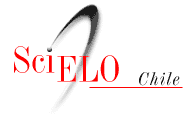Vascular flora in plantations dominated by Coihue (Nothofagus dombeyi) and Raulí (Nothofagus alpina)
Keywords:
afforestation, diversity, floristic assemblage, native forest, vascular floraAbstract
The present study aimed to understand the richness and diversity of vascular flora in plantations dominated by Coihue (Nothofagus dombeyi) and Raulí (Nothofagus alpina), mainly located in the Los Ríos region, although the sampling included plantations between approximately 37º15’ and 41º15’ S, in both mountain ranges and intermediate depression. During the years 2022 and 2023, 40 plantations ranging from 13 to 81 years of age, with and without forest management, were floristically surveyed. In each of them, five rectangular plots of 100 m² were established, recording the vascular floristic composition and their coverages. The results indicate a general richness of 154 taxa distributed in 69 families and 120 genera. A total of 133 taxa were recorded in Coihue plantations and 138 taxa in Raulí plantations. The general phytogeographic origin for both plantations show the dominance of native and endemic species, with perennial herbs being the most frequent. The Asteraceae family is the most representative, with 14 species (22 %). The genus with the most representatives is Blechnum L., with five species. The reported flora includes 9,1 % of species with conservation problems in Chile, with one species in the “Endangered” category, Berberidopsis corallina. Diversity is high, with significant differences in species composition. As the age of the Coihue and Raulí plantations increases, the floristic assemblage becomes more diverse, similar to those recorded in other areas with natural Coihue and Raulí forests.
Downloads
Metrics
Downloads
Published
How to Cite
Issue
Section
License
Copyright (c) 2025 Mario Romero-Mieres, Celso Navarro, Pablo Donoso, Paulo Dumont, Óscar Larraín, Angélica Vasquez

This work is licensed under a Creative Commons Attribution-NonCommercial 4.0 International License.
Authors who publish with this journal agree to the following terms:
- Authors retain copyright and grant the journal right of first publication.
- The articles in this journal are published under Creative Commons Attribution-NonCommercial 4.0 International License that allows others to share the work with an acknowledgement of the work's authorship and initial publication in this journal.
- Authors are permitted and encouraged to post their work online (e.g., in institutional repositories, on their website or ResearchGate) prior to and during the submission process, as it can lead to productive exchanges, as well as earlier and greater citation of published work (SeeThe Effect of Open Access).













